 |
  |
 |
  |
NAVARASA SADHANA: An alternate actor training module based on Indian Traditional Theatre and Natyasastra - G Venu e-mail: abhinayakairali@gmail.com January 13, 2025 India possesses one of the richest theatre cultures in the whole world. It was around three decades ago, when I got the opportunity to become one of the directors in the World Theatre Project based in Sweden, and to learn about the theatre practices all over the world, that I became seriously aware of the distinctive greatness of our theatrical traditions. Any enquiry about the long-standing theatrical traditions which possess actual treatises dating back to antiquity would reveal that the only available document for the Western theatrical tradition is the Poetics by Aristotle. It is a very small text, with only around 50 pages of the original work being available now. Thinking of the Asian countries outside India, the Japanese treatise, 'Kadensho, A Secret Book of Noh Art,' dating back to the 15th century and composed by Zeami Motokiyo (1363 - 1443), the maestro of Japan's Noh Theatre is the first one that comes to mind. Its English translation comes to around 150 pages. When it comes to the Indian tradition, it's undoubtedly the Natyasastra, the vast treatise that is believed to have been composed in Sanskrit, sometime between A.D. 2nd century to BC 3rd century, which comes to the mind. There are many speculations about the actual age of this treatise, though. It describes the notion of 'Natya' through more than 6,000 sloka-s. Apart from Natyasastra, many other treatises on Natya, or theatre, composed in Sanskrit as well as the regional languages exist in India. Undoubtedly, India has the richest collection of treatises on the art of theatre. Besides, India is the only country in the whole world where an actor is venerated as a god. Lord Siva, one of the Trinity of Hinduism, is also celebrated as 'Nataraja,' the Divine Cosmic Dancer. The word 'Nataraja,' literally means the King of Actors. The purana-s give detailed description of many of Siva's performances. Even though many of these descriptions could be more or less exaggerations, they do contain many factors regarding acting and theatre. The legends pertaining to the acting prowess of Lord Siva hint at the application of devices like that of magic (Indrajalam and Mahendrajalam). These techniques were actually practised in Kerala till recent generations. Who knows whether Lord Siva was originally an acclaimed actor who might have lived somewhere in India during some far off point in time, later elevated into the stature of a god! The references to Lord Siva dates back to the Indus Valley civilisation. The Cosmic Dance of Siva might have evolved in the imagination of many generations of people who lived in our region after the Indus Valley civilisation. Later on, this Cosmic Dance became immortalised as images depicted in stone. That the dancers and actors in India could boast of a predecessor who was elevated to the status of a god is the biggest benediction this profession ever received. 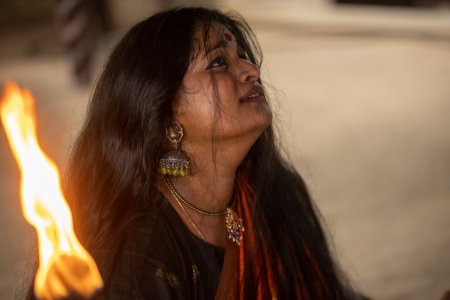 Neha Rao Ponugoti 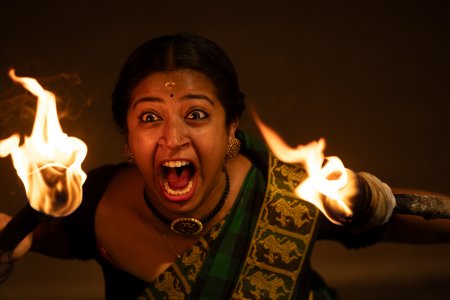 Krishnendu Hari Another special attribute of the Indian theatrical tradition is the space given to women on stage. This was also a rare happening in the whole world. Greek Theatre had no women. And there were absolutely no women appearing on stage during Shakespeare's time. In the Beijing Opera of China, as well as in the Noh and Kabuki traditions of Japan, female characters were impersonated by male actors. But, Bharata had insisted that female characters should be performed only by women. Urvashi, the celebrated celestial dancer and actress from the Purana-s, was one of Bharata's most favourite disciples. Kutiyattam, the ancient Sanskrit theatre indigenous to Kerala, is the one and only ancient Indian (and global) theatre form that gives women a central space. However, notwithstanding the Indian theatre possessing such a rich tradition, all the present theatre training methodologies practised in India follow the Western theatre practices. The Method Acting, evolved by Stanislavski who had lived during the first half of 20th century is still the most popular acting methodology in India. The techniques based on Natyasastra are limited to the training of the classical dance forms. This has given rise to a popular misconception that the Natyasastra is a system that pertains only to the dance forms. Such a misapprehension in turn arises from the misreading of Natyasastra that it just encompasses a stylised rendering of the four-fold acting methodology comprising of Angika, Vachika, Aharya and Sathwika abhinaya-s. The Indian theatre schools diligently follow all the Western masters of theatre right from Stanislavski to Antonin Artaud and Jerzy Grotowski etc. It was during my own training of Kutiyattam under Guru Ammannur Madhava Chakyar that I started learning to tell apart the major differentiations between Kathakali and Kutiyattam. I had entered Kutiyattam after learning Kathakali for eight years. As I started distinguishing between the dance theatre of Kathakali and the theatrical form of Kutiyattam, I started to contemplate seriously on the notion of what makes up the Indian theatre. 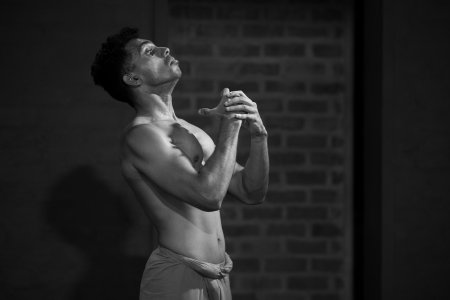 Manoj Kumar 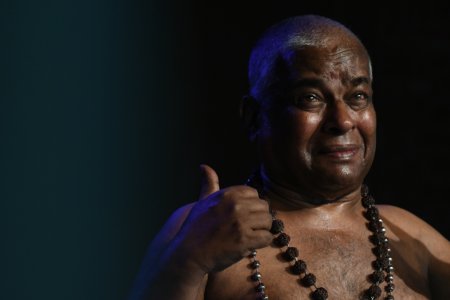 G Venu Bharata's Natyasastra contains a formula (soothra) called 'Vibhavanubhava vyabhichari samyogad rasanishpathi.' In this formula, the 'vyabhichari' bhava-s (emotions) are placed immediately after the notions of 'vibhava' and 'anubhava.' Bharata has given detailed descriptions of the 33 vyabhichari bhava-s. I had enquired with many scholars and performers on how these vyabhichari bhava-s could be applied in abhinaya or acting. However, none of the scholars of Natyasastra that I encountered had any clear answer for this query. The students of dance are usually taught only the 'sthayi' bhava-s. The vyabhichari bhava-s are just taught as a list, nothing more. Then, I started my attempt to conduct a detailed study of the vyabhichari bhava-s. Each vyabhichari bhava determined by Bharata has its own vibhava-s and anubhava-s. For example, 'Nirvedam,' the first vyabhichari bhava consists of eight vibhava-s, including 'daridrya,' (poverty), 'vyadhi,' (sickness), 'avamanam,' (shame), 'adhikshepam,' (insult), 'thadanam,' (beating), 'ishtajanaviyogam' (loss of loved ones) and 'thathwajnanam' (philosophical wisdom). Usually, the actors are instructed to use sighs or fixing the mind in order to portray these emotions. But I felt that these vibhava-s needed to be acted in a completely realistic manner. I started experiments with myself in that manner. For me, it was a big point of realisation. As we pass through such experiences, we are able to move through the most common and natural emotions of life. Natyasastra describes the emotion that needs to be expressed in a heart-felt, emotional way as 'Sathwikabhinaya.' However, none of the ancient treatises give any detailed explanation as to how this 'Sathwikabhinaya' should be trained. I realised that in order to master the enacting of the emotions, or the Sathwikabhinaya, the actor has to assimilate the vibhava-s and anubhava-s of each of these vyabhichari bhava-s. The 33 vyabhichari bhava-s stipulated by Bharata has a total of 152 vibhava-s. These vibhava-s are omnipresent in human life, across centuries and regions. No subjects other than these vibhava-s that possess the potential of emulating could be found in any acting training methodology existing at present anywhere in the world. The training in Navarasa Sadhana begins with the movement of eyes. The eyes are trained to be moved in different manners. Then, the exercises moves down to different elements of the face, like the eyebrows, the areas around the eyelids, lips and so on. After completing the exercises of the face, the major mukharaga-s (facial attitude) are trained. Among them, 'Prasannam' includes all the five senses. The mukharaga of 'Raktham' increases the blood pressure in the face through control of breath. Following this, the actor will be given instructions to express all the nine Rasa-s starting from Sringara, according to the different subject matters. After this, acting incorporating vyabhichari bhava-s is introduced. Equal importance is given to both the stylised as well as realistic acting. 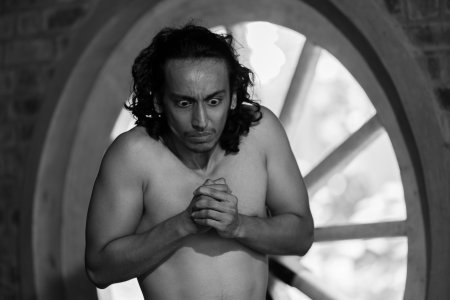 Krish Jain 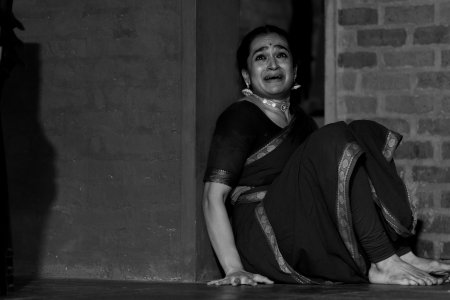 Pratibha Kini So far, I have conducted a total of 148 workshops of Navarasa Sadhana at various centres including the Intercultural Theatre Institute (ITI), Singapore (2005 - 2020), National School of Drama, New Delhi (2007 - 2020) and at Natanakairali, Irinjalakuda, with an average of around 20 participants for each workshop. Navarasa Sadhana has 8 phases. In my experience, Navarasa Sadhana becomes a complete acting training system based on Natyasastra that merges the stylised acting methodologies with the realistic portrayal of the vyabhichari bhava-s. At ITI, in Singapore, my students included the Chinese, students from the other Asian countries as well as from the Western countries. At the National School of Drama, the students are drawn from the different parts of India. And the students who arrive at Natanakairali, Irinjalakuda in Kerala for Navarasa Sadhana training include practitioners of various Indian classical dance forms like Bharatanatyam, Mohiniyattam, Kuchipudi, Odissi, Kathak, Sattriya and likewise, as well as theatre practitioners trained at various leading theatre institutions of India. My six-decade-long experience and studies not only in Kathakali and Kutiyattam, but in the Indian performing art forms generally, has revealed to me that in the Indian theatre tradition, an actor has to go through three stages of assimilation- individual, actor and character. This is not a concept found in Natyasastra. Rather, it is something revealed to me through my own experiences. It is the individual who assimilates various methodologies of acting training and conducts researches upon these processes. Thus, this individual creates an actor / actress out of his/her self. According to the Indian theatre traditions, the actor / actress are individuals possessing superhuman powers. This notion of superhuman powers arises when the actor/actress imagines their microbody. All the acting techniques constitute the stage language of the actor/actress. It is the actor / actress that contains the character. The acting will follow the subject matter of the plot, containing the 'sthayi' (the basic nature) of the character. However, it remains the responsibility of the actor to observe whether this acting reaches the viewer without any hindrance. For example, when a Kutiyattam performer shifts into the character of Ravana, he is viewing the Mount Kailasa in all its minute details. At the same time, it is the actor's responsibility to show the viewer all those details. When both these acts of 'seeing' and 'showing' merge together, abhinaya or acting attains its perfection. Another important characteristic of the Indian acting tradition is its ability to contain both the female and male qualities. That is why Siva, the Great Actor, is described as Ardhanareeswara, the Lord who is half feminine and half masculine. Kutiyattam is the only theatre form that retains this notion. It has no separate training systems for the male and female actors. But the female impersonators in other forms are given separate training. The portion of 'Parvathi Viraham' in Kutiyattam follows the Ardhanareeswara concept. For example, when the actor shifts into the character of Ravana, Ravana is shown as seeing the Mount Kailasa when it is the actor's role to 'show' the Mount Kailasa to the viewers. In the Indian theatre traditions, the stage language including various types of acting like Angika, Vachika etc. belongs to the actor, not to the character. The Navarasa Sadhana training, divided into eight phases, concludes with the teaching of 'Parvathi Viraham,' the portion which combines both the feminine and masculine aspects. Navarasa Sadhana is an acting training methodology that requires a daily practice routine. It should become part of the daily routine. According to many of those who have been trained in Navarasa Sadhana, the practice has helped them immensely. It is possible to evolve a comprehensive acting methodology based on Navarasa Sadhana, and drawing deeply into Natyasastra and the Indian traditional performing art forms. 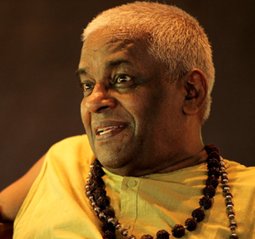 G. Venu is a performer, teacher and scholar of Kutiyattam and a senior disciple of Guru Ammannur Madhava Chakyar. He has devised 'Navarasa Sadhana' module as a transformative process for artistes seeking a deeper insight to the depths and diversity of human emotions. He is Chairman, Natanakairali, Ammannur Chakyar Madhom in Irinjalakuda, Kerala. Post your comments Pl provide your name and email id along with your comment. All appropriate comments posted with name and email id in the blog will be featured in the site. |